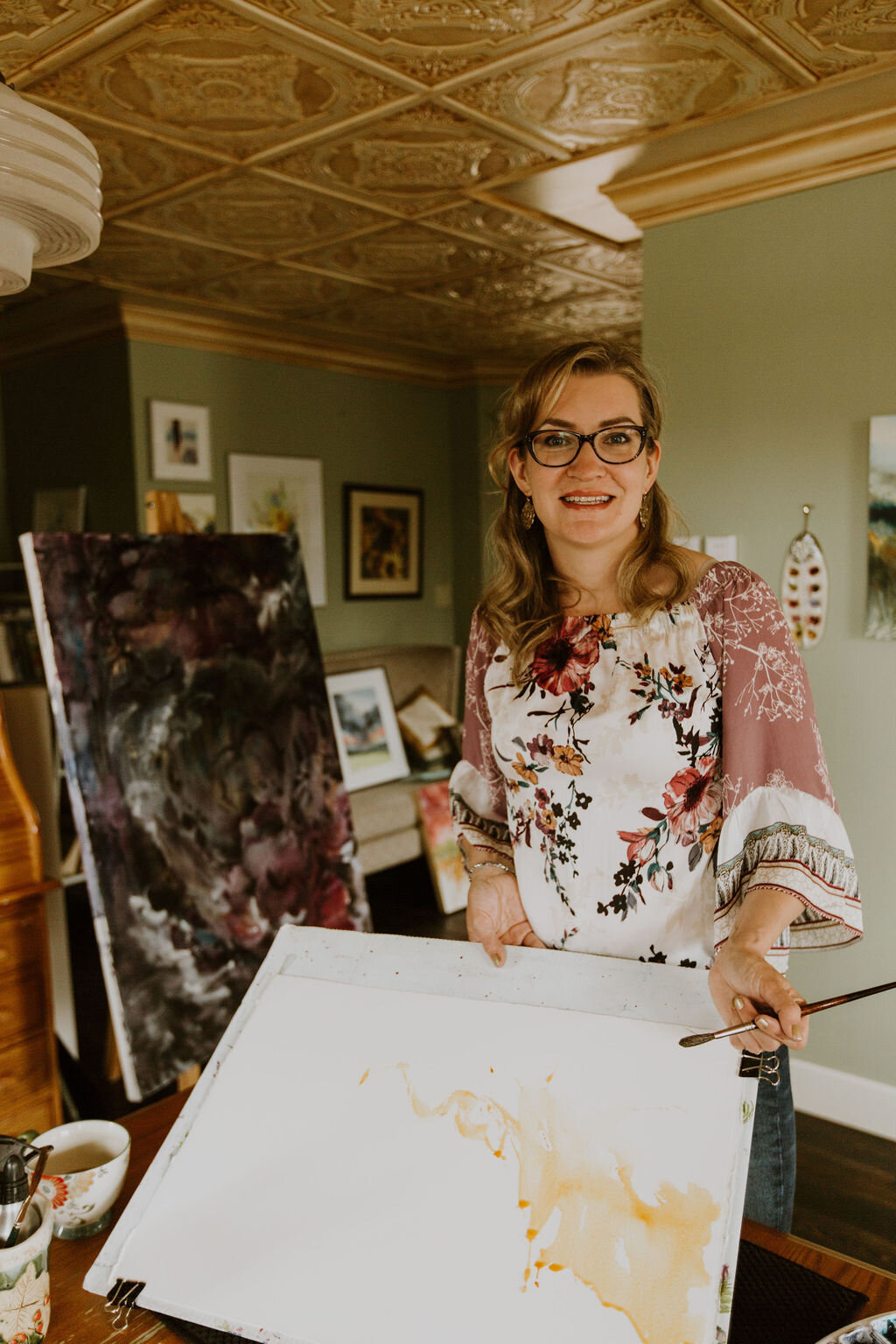Are you overwhelmed trying to figure out how to teach art online?
If you’re an artist, chances are pretty high that you’ve been asked to teach art in some capacity along the way. Teaching art is a great way to supplement painting sales, although my personal opinion is that unless you really love teaching, it can be a huge distraction and a drain on your creative energy. The teachers who inspire are the ones who truly love teaching and feel the call to share what they’ve learned.
I started teaching online because when I learned a new watercolor technique, I couldn’t restrain myself from telling someone. I started with a few videos on my YouTube channel, and in November of 2013, having no idea what I was getting into, totally terrified, I launched my first online watercolor course.
Nearly seven years later, I am so thankful I took the leap and started teaching art online. I’ve been able to create a learning platform that has inspired thousands of students, and my commitment to my students and the growth of my site has enabled me to live out a dream of teaching all over the world. Because I teach online, I can work from home and my husband has been able to scale back his own work from his very physically demanding job so he can spend more time with me and our three teenagers. Teaching online has blessed our family!
Feeling overwhelmed?
If you’re feeling the call to teach, or if you are teaching and have had to cancel workshops due to current travel restrictions due to Covid-19, you might be thinking seriously about teaching online. There are a lot more resources out there than there were in 2013, and you are likely feeling a little overwhelmed!
You don’t need to have it all figured out!
My first encouragement to you would be not to overthink it. You don’t need to know everything in order to teach online; as you research you’re going to be bombarded with jargon and thinking about lead magnets, funnels, CRM and other marketing mumbo jumbo is going to add to that feeling of overwhelm. Please know that you can start like I did, and common-sense your way through this! Just recently I was commenting to my assistant, Robin, that we should research how to create funnels to turn new contacts into customers, and Robin reminded me that I’m really good at funnels! I have been implementing different strategies for years, I just didn’t know that what I was doing had a technical term! You can step away from the overwhelming idea of creating a massive system to bring in sales, and simply focus on thinking about what your ideal student needs, and finding ways to fill that need, and communicate that to them as clearly as possible.
Before you build that course:
Something you can do right now is to start working on creating some great free content for your potential students. Free video lessons serve as an audition for you to your audience; they can hear and see you teach and you get to build trust and demonstrate your expertise and ability to communicate. Don’t skimp out here; share your best content, your strongest areas of expertise, just like you would want to perform at your best in an audition. Facebook, YouTube and Instagram are the current leaders for providing video content via social media, each with their own dynamic, advantages and disadvantages. Start with the one you’re most familiar with, or wherever you are currently posting your art, since a portion of your social media following is likely interested in making art as well as viewing or buying it.
How do I know if I’m ready to create a course?
There are a few things you need before you build and launch your first online art course.
You have potential students on a mailing list or social media following who are good prospects to buy
You have a strong course idea that isn’t too broad, and an outline for how the course lessons will be structured.
You have a positive mindset and are willing to put in the work long term.
Things you don’t need:
You don’t need a fortune worth of video equipment, or a videographer; many course creators shoot their courses on a smartphone. Upgrade when your course starts to bring in income.
You don’t need expensive apps. Most learning platforms offer commission-based plans where you only pay if your course is making money.
You don’t need a perfect course. You will feel imposter syndrome, and perfection paralysis as you create your course. This is common. Stick to your outline and plan to launch in “beta” - tech jargon for testing format. This gives you the ability to offer a discount for the first customers, in exchange for their feedback, and you can improve and edit the course as you improve your course creation abilities.
Join me for the Teaching Art Online Summit
If you’re struggling to wrap your head around this whole online teaching thing, or if you’d just like to have some encouragement and support from artists who’ve been there, I hope you’ll join me and a lineup of other experienced art instructors for the Teaching Art Online Summit, on Wednesday, April 1, 2020. This event is hosted by one of my art business heroes, Alyson Stanfield. Alyson has been teaching online since 2003, and her mission is to support artists as we navigate this world of online marketing. I’m so excited to be sharing what I’ve learned about teaching art online, and to learn from other artists who are sharing their own expertise. Sign up for the summit here, the hours of content are well worth the very low price!


